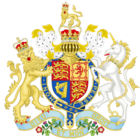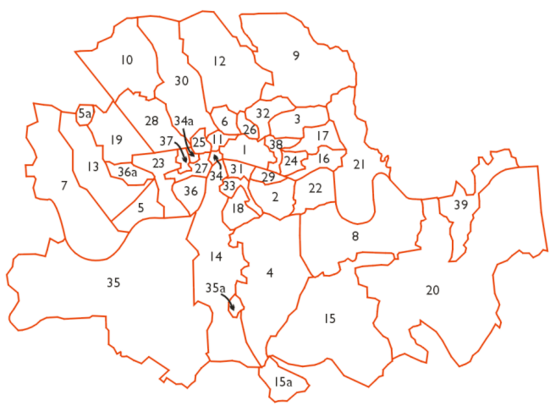Metropolis Management Act 1855 facts for kids
| Act of Parliament | |

|
|
| Long title | An Act for the better Local Management of the Metropolis |
|---|---|
| Citation | 18 & 19 Vict. c. 120 |
| Territorial extent | England and Wales |
| Dates | |
| Royal assent | 14 August 1855 |
| Commencement | 1 January 1856 |
| Other legislation | |
| Repealed by |
|
|
Status: Partially repealed
|
|
| Text of statute as originally enacted | |
| Text of the Metropolis Management Act 1855 as in force today (including any amendments) within the United Kingdom, from legislation.gov.uk | |
The Metropolis Management Act 1855 was an important law passed in 1855 by the UK Parliament. This Act created a new organization called the Metropolitan Board of Works. This board was in charge of planning and building big projects across London, like sewers and new roads.
The Act also set up a second level of local government. This included local groups called parish vestries and district boards. These groups helped manage local areas. The Metropolitan Board of Works was a very early version of what later became the London County Council, which governed London for many years.
Contents
Why London Needed New Management
Before this Act, London was growing very fast. But it had many different local groups. These groups often did not work together. This made it hard to build big projects that London needed, like a proper sewer system.
A special group, the Royal Commission on the City of London, looked into this problem. They suggested creating a new board for all of London. This board would handle specific tasks, like building infrastructure.
The Metropolitan Board of Works: What It Did
The Metropolis Management Act officially created the Metropolitan Board of Works. Members of this board were chosen by the local parish vestries and district boards. The first members were elected on 12 December 1855.
From 1857, some members of the board would change each year. The new board took over the jobs of older groups. These included the Metropolitan Commission of Sewers and the Metropolitan Buildings Office. This change happened on 1 January 1856. The board was responsible for the area that the Registrar General called 'London' in the 1851 census.
Local Vestries and District Boards
The Act also set up local governments for smaller areas. These were based on existing parish vestries. These areas were in parts of Middlesex, Kent, and Surrey counties.
Section 42 of the Act explained how these local groups would be set up.
- If a single parish became a local authority, it was called "The Vestry of the Parish of _______ in the County of ________".
- If several parishes joined together, the new group was called "The Board of Works for the _________ District".
How Local Areas Joined the Metropolitan Board
The map below shows the different areas of London in 1855. These areas were grouped into vestries and districts. Each group sent members to the Metropolitan Board of Works. This helped make sure all parts of London had a say.
|
|
| Some small parts of parishes and districts were detached: 5a Kensal Green; 15a Penge Hamlet; 34a St Anne; 35a detached portion of Streatham parish; 36a Kensington Gardens Not shown is Clerkenwell Detached, a separate piece of that parish within Hornsey, Middlesex. |
|
Many different areas elected members to the Metropolitan Board of Works. For example, the City of London elected 3 members, while areas like Bermondsey and Bethnal Green each elected 1 member. Larger areas like Islington and Lambeth elected 2 members. These local groups had their own offices, often called Vestry Halls or Town Halls.
Later Changes to the Act
Over the years, other laws changed how London was managed:
- In 1886, the Fulham District Board of Works was split. Fulham and Hammersmith each became their own local authorities.
- In 1889, a new law called the Local Government Act 1888 replaced the Metropolitan Board of Works. A new, bigger body called the London County Council took its place. The area the board covered became the County of London. This meant these areas were now part of the new county, not Middlesex, Kent, or Surrey.
- In 1894, the Hackney District Board of Works also split. Hackney and Stoke Newington became separate local authorities.
- In 1900, the London Government Act 1899 created new metropolitan boroughs. These new boroughs replaced the old vestries and district boards.
What Remains of the Act Today
Most of the Metropolis Management Act 1855 has been cancelled over time. As of October 2012, only two small parts of the Act are still in force. These parts deal with keeping up enclosed gardens and certain duties related to the Crown Estate Paving Act 1851.


